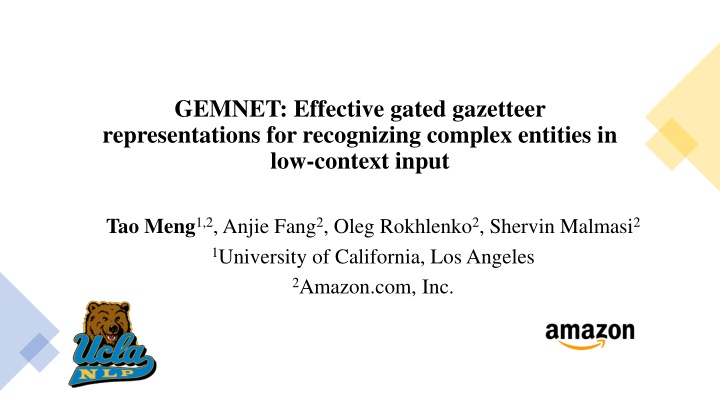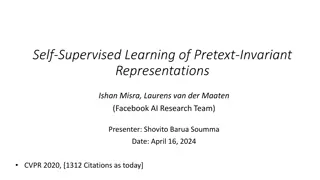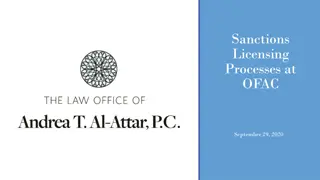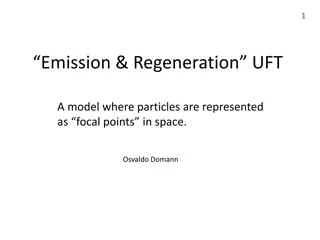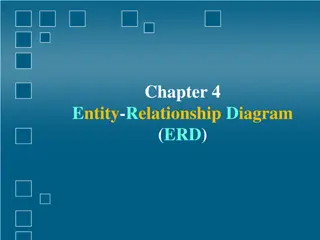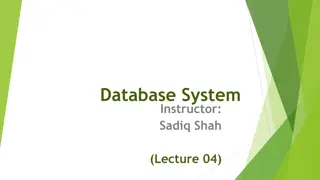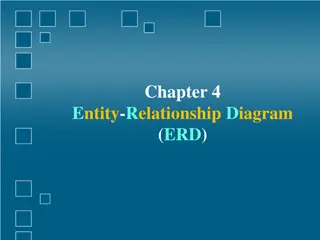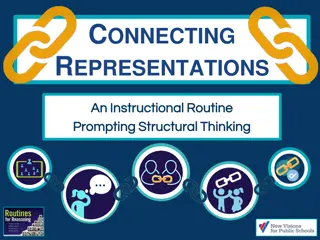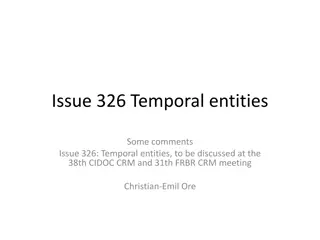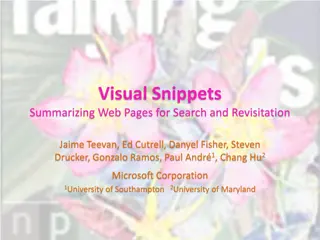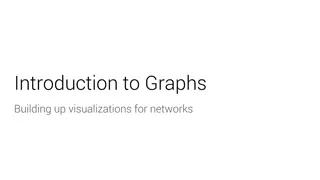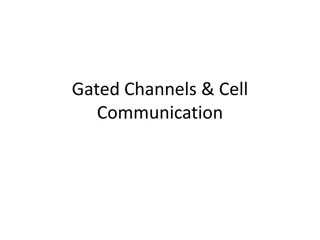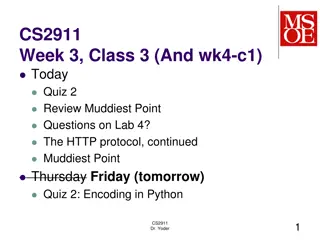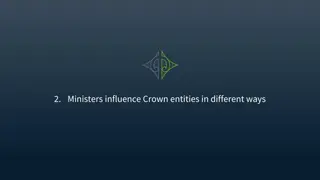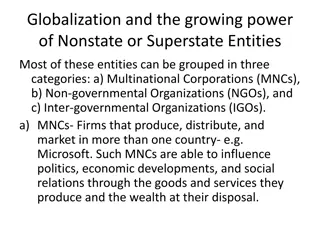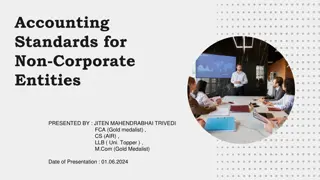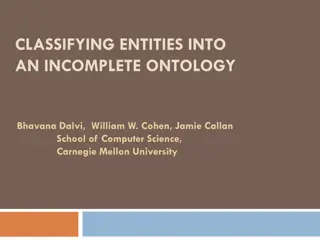Effective gated gazetteer representations for recognizing complex entities in low-context input
This article discusses the development of effective gated gazetteer representations aimed at enhancing the recognition of complex entities in low-context input scenarios. The study, conducted by Tao Meng, Anjie Fang, Oleg Rokhlenko, and Shervin Malmasi from the University of California, Los Angeles, in collaboration with Amazon, explores innovative approaches to entity recognition in challenging contexts.
Uploaded on Feb 22, 2025 | 0 Views
Download Presentation

Please find below an Image/Link to download the presentation.
The content on the website is provided AS IS for your information and personal use only. It may not be sold, licensed, or shared on other websites without obtaining consent from the author.If you encounter any issues during the download, it is possible that the publisher has removed the file from their server.
You are allowed to download the files provided on this website for personal or commercial use, subject to the condition that they are used lawfully. All files are the property of their respective owners.
The content on the website is provided AS IS for your information and personal use only. It may not be sold, licensed, or shared on other websites without obtaining consent from the author.
E N D
Presentation Transcript
GEMNET: Effective gated gazetteer representations for recognizing complex entities in low-context input Tao Meng1,2,Anjie Fang2, Oleg Rokhlenko2, Shervin Malmasi2 1University of California, Los Angeles 2Amazon.com, Inc.
Named Entity Recognition (NER) remains difficult in real-world settings He worked for linear technology and analog devices. What is life is beautiful?
Current NER challenges Emerging entities In domains with growing entities e.g. new products, new books, Complex entities linguistically complex and even not proper names e.g., how about [to kill a mockingbird] Short text In voice, search, e.g., search query [PROD] reviews" Long-tail entities In domains with many entities e.g., a version for the [sega cd] was also announced Current benchmark? CoNLL03, WNUT17, Ontonotes v5.0, Large proportion of easy entities in PER, LOC, etc Rich context
Data Collection MSQ-NER (MS-MARCO Question NER) Source: MS-MARCO QnA corpus (V2.1)[1] Templatize the questions e.g. where was <CW> filmed ORCAS-NER (Search Query NER) Source: ORCAS dataset[2] Templatize the user queries e.g. <PER> parents NER Taxonomy Follow WNUT 2017 taxonomy Emphasize hard entities LOWNER (Low-Context Wikipedia NER) Source: Wikipedia Minimize the context around the entities e.g. the regional capital is [oranjestad, sint eustatius] . [1] Bajaj, et al. 2016. Ms marco: A human generated machine reading comprehension dataset. arXiv preprint arXiv:1611.09268 [2]Craswell,et al. 2020. Orcas: 18 million clicked query-document pairs for analyzing search. arXiv preprint arXiv:2006.05324.
New datasets are challenging Benchmark models on our datasets (Metrics: Mention Detection) Verify the challenges
Let's use gazetteer! What is life is beautiful? He worked for linear technology and analog devices. It's a Corporation It's a Corporation It's a Movie Gazetteer: Source: Wikidata KB 1.67M entities { Apple : CORP, Iphone 12 : PROD, Iphone : PROD , Apple Iphone 12 : PROD}
The GEMNET model.Representation Word Representation: BERT Gazetteer Representation: Contextualized gazetteer representation (CGR) Matching Friendly to emerging Embed to dense Contextualized Baseline: No gazetteer integration Neural model trained on gazetteer
The GEMNET model.Mixture of Experts (MoE) MoE is a gated architecture to conditional combine multiple experts. Word representation and CGR can be regarded as two experts. Baseline: Concatenation Two-stage training.
GEMNET Performance Benchmark datasets (F1 score) Our datasets (F1 score) Comparison: Gazetteer Integration Comparison: Combination methods 100 100 80 80 60 60 40 40 20 20 0 LOWNER MSQ-NER ORCAS-NER 0 LOWNER MSQ-NER ORCAS-NER Concat + OneStage Concat + TwoStage Baseline Liu et al. 2019 CGR(GEMNET) MoE+OneStage MoE+TwoStage(GEMNET)
GEMNET Performance Per class improvements Baseline: No gazetteer Improvements are larger in hard classes Per Class Improvements 70 60 50 40 30 20 10 0 LOWNER MSQ-NER ORCAS-NER PER LOC GRP CORP CW PROD
Ablation study.gazetteer coverage When the training coverage is fixed: Higher testing coverage -> Higher performance When the testing coverage is fixed: Closer coverage between training and testing -> Higher performance With proper training coverage setting, performance is always better than baseline. Coverage analysis on LOWNER test set. X-axis is the testing coverage and Y-axis is the training coverage. Baseline (no gazetteer): 87.0
Ablation study.low-resource setting GEMNET are always more efficient than the baseline model. Specifically, GEMNET improves much faster with less data. NER results on the full test set (F1) for comparing a baseline model and GEMNET in low-resource settings using small subsets of the training data GEMNET achieves close to maximum with only 20% data.
Summary Our contribution We developed new datasets to represent the current challenges in NER. We proposed GEMNET, a flexible architecture supporting external gazetteers. We analyzed the effects of gazetteer integration method, training method, gazetteer coverage and training data size
